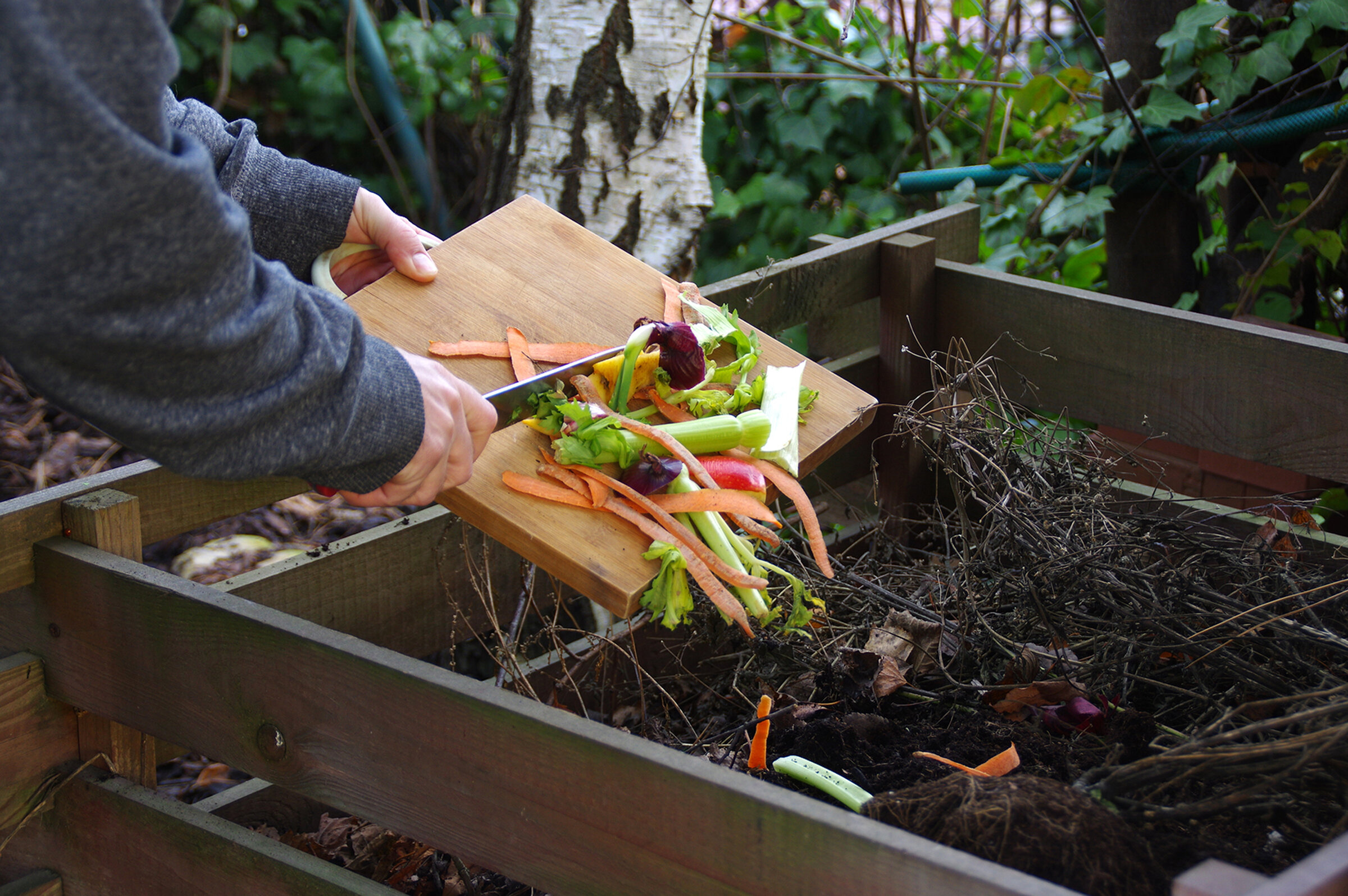How to Compost at Home
Originally published in the Summer 2020 issue of SPOKE+BLOSSOM.
For many people, familiarity with composting extends to a pile of smelly food scraps and the big green can the waste management company provides homeowners. In actuality, composting can be done right in your own yard with phenomenal results and no smelly leftovers.
“The benefits of home composting are many,” says Dennis Hill, former owner and current employee of Bookcliff Gardens in Grand Junction. Compost acts as a natural fertilizer and returns nutrients to the soil, turning a vegetable garden into an abundant little farm, full of new, healthy growth. “Things grow like crazy,” explains Hill, whose own backyard is a haven of lush greenery that invites birds and butterflies from miles around.
If space isn’t an issue, your compost doesn’t need to be contained. Hill is a proponent of the pile method. He often has multiple piles at a time: “one ready to go, one in process and one I’m still building,” he says. However, if you’re hoping to be a little more contained, stacks of concrete blocks, chicken wire and wood pallets are all great ways to make your compost more compact. Regardless, the key thing to remember is to make your compost big enough. Hill recommends a space of about 3 cubic feet. For compost to thrive, it must have enough oxygen. Too small of a compost bin will negatively impact your pile.
Once you’re ready to start, here are five things that will ensure your compost is successful:
Brown Matter This includes things like leaves, sawdust, wood chips and newspaper. Brown matter will make up the majority of your compost pile.
Green Matter Lawn clippings, weeds and kitchen scraps, such as coffee grounds and veggie peeling are great examples of green matter. This is the other main component of your compost pile. Be sure to avoid fats and oils, like meat products and bones, as these will make your compost smell and attract animals.
Water Little-known fact: composting won’t happen without water. Sprinkle your pile with a hose about once a week to ensure it remains damp. But be careful: if a pile is too soggy it won’t have enough oxygen.
Oxygen Aerobic activity in your compost
pile helps all the green and brown matter decompose. In order to maintain good airflow in your pile, use a shovel or pitchfork to turn it every two to four months. This also helps the materials on the outside get deeper into the pile and decompose faster.
Microbes These little guys are what make the food scraps actually become compost. By adding a scoop or two of pre-composted organic matter or manure, you can easily begin to kickstart your bacteria growth.
As you begin to assemble your pile, adopt the “lasagna method.” Layer your compost with a base of brown matter and a small pile of green matter on top. Repeat this as the pile grows to ensure a healthy distribution of each type. The pile should use a ratio of three parts brown matter to one part green matter. When you’re just starting, Hill suggests using grass clippings as the first few green layers, but make sure that you don’t put too much, otherwise the damp grass will become “a hot, stinking mess.” Additionally, avoid adding clippings if they are treated with weed killer; the pesticide will make your compost unusable.
Because the soil in Western Colorado is often dry and lacks nutrients, compost is the perfect soil amendment for a vegetable garden. Once you’ve created a sizeable compost pile, place the soil on top of your garden beds — about 3 to 5 inches worth. Then, using a till or spade, mix the two together thoroughly. Each year when you go to revive your veggie garden, repeat this step. After four to six years of this, the dirt in the beds will be rich in nutrients and have created an excellent biome for plant growth. At this point, you can simply add a new compost layer to the top of the soil and let Earth’s natural tillers, the earthworms, do the rest.
Depending on how intensively you treat your compost, it can be ready in as little as three months, but it’s safer to bet on a year before it’s ready. The more you turn the pile and adjust the moisture, the sooner it’ll be ready. An easy way to tell? Smell it. “A compost pile should be inoffensive; if it smells, something is wrong,” Hill declares. You also shouldn’t be able to recognize anything in the pile, like that orange peel from a few months back.
Compost is a great way to encourage growth in your garden and reduce your waste. Start fostering this sustainable practice — your veggies will thank you for it.

